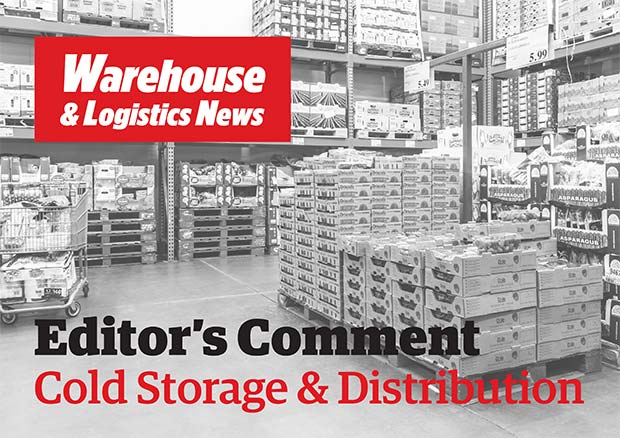Now is the time the supply chain is most in need of the Government’s help, as their food service customers begin to reopen over the coming months. Tim Moran, President of the Cold Chain Federation, which represents the firms which store and distribute chilled and frozen food in cold warehouses and temperature-controlled vehicles, called on the Government to take action in a speech to the Federation’s AGM. He said: “The period of slow and partial reopening of our food industry will be the most dangerous period for supply chain businesses. Businesses that restart furloughed operations, with significantly reduced volumes, will be at their most vulnerable. That is when Government support will be needed the most in the food supply chain.” Later in this feature, you can read a Q&A with Cold Chain Federation Chief Executive Shane Brennan, who will discuss how chilled and frozen storage and distribution businesses can best prepare for the coming months and the ‘new normal’.
This article was first published in the June 1st 2020 issue of Warehouse & Logistics News, subscribe to the magazine by clicking here.
 Star Refrigeration is advising existing customers that they should continue to carry out plant maintenance, as deferring site visits by refrigeration engineers could have an adverse effect over time. The company recommends that all current maintenance schedules are followed for as long as possible during the COVID-19 pandemic. In line with government guidance, Star’s nationwide engineering team is continuing to provide a support service for food production, processing, storage and distribution.
Star Refrigeration is advising existing customers that they should continue to carry out plant maintenance, as deferring site visits by refrigeration engineers could have an adverse effect over time. The company recommends that all current maintenance schedules are followed for as long as possible during the COVID-19 pandemic. In line with government guidance, Star’s nationwide engineering team is continuing to provide a support service for food production, processing, storage and distribution.
One positive aspect of COVID-19, if it’s not in bad taste to say the coronavirus has a plus side, is that mankind’s damage to the environment has been reduced. However, this state of affairs is likely to be temporary. One presumes that when life returns to normal, the environmental damage will return to pre-March levels. With food transport, including refrigeration, thought to be responsible for almost 2% of the UK’s total greenhouse gas emissions, manufacturers of refrigerated vehicles are facing challenges when it comes to reducing their environmental impact and making cost savings. As the EU looks to cut CO2 emissions by 15%, manufacturers of refrigerated vehicles must look for alternative methods of fitting out vehicles to ensure emission targets are met. The use of lightweight, thermally efficient panels, both in the design and manufacture of new refrigerated vehicles and retrofitted to existing vehicles, is a popular method of achieving significant cost savings.
As different sectors of the economy start to open again, we can expect demand for chilled and frozen food to pick up too. However, pubs, restaurants, mass gatherings and international leisure travel are expected to be among the last sectors back in operation. Seeking out new sources for orders to replenish diminished demand from these sectors will be vital for many cold chain businesses. Cold storage and distribution businesses must adapt operations for a long period of social distancing in the workplace, complete a risk assessment and provide information for employees.




Comments are closed.